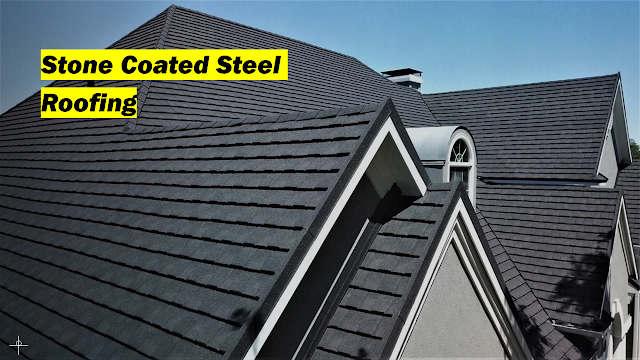Japanese roofs are a basic piece of customary Japanese engineering, known for their particular and stylishly satisfying plans. In addition to providing shelter, they are culturally significant in Japan. In this blog, we will explore different kinds of Japanese roofs, delve into the cost aspects, and discuss the installation process. Whether you are a design lover or intending to redesign your home, this article will give important experiences into the universe of Japanese roofs.
Understanding the Value of Japanese Roofs:
Japanese roofs, which are also referred to as "Yane" in Japanese, are a fundamental component of traditional Japanese buildings. They have a rich history tracing all the way back to old times, with impacts from various periods and regions in Japan. The climate, geography, and availability of building materials in Japan greatly influence the design of Japanese roofs. The tasteful allure and usefulness of these roofs have made them getting through images of Japanese design.
Types of Japanese Roofs:
1. Gabled Roofs (Gable-Ended or "Kirizuma-zukuri")
2. Hipped Roofs ("Irimoya-zukuri")
3. Mansard Roofs ("Hafu-zukuri")
4. Pyramid Roofs ("Yosemune-zukuri")
5. Gambrel Roofs ("Inu-yarai-zukuri")
Cost of Japanese Roofs:
Installing a Japanese roof can cost a lot of money depending on a number of things, like the roof's type, size, location, and choice of materials. We are able to estimate the price ranges for various kinds of roofs, despite the fact that it is difficult to provide precise figures due to the constantly shifting market.
Gabled Roofs: The most widely recognized type, gabled roofs, are generally reasonable, with costs going from $10,000 to $20,000 for a normal measured home.
Hipped Roofs: Hipped roofs are somewhat more costly, with costs going from $15,000 to $25,000 because of their more complicated plan.
Mansard Roofs: Mansard roofs are relatively expensive due to their intricate design, with prices starting at $20,000 and potentially exceeding $30,000.
Pyramid Roofs: Pyramid roofs are ordinarily reasonable, with costs going from $8,000 to $15,000, depends on the size and materials utilized.
Gambrel Roofs: Gambrel roofs might have comparable expenses for Mansard roofs, beginning from $20,000, however it at last relies upon different variables.
In order to accurately estimate the costs of a project, it is essential to speak with experienced contractors and obtain multiple quotes.
The Process of Installing Japanese Roofs:
The process of installing Japanese roofs necessitates expert craftsmanship as well as a thorough comprehension of traditional building methods. Here are the fundamental advances engaged with the establishment cycle:
Design and Planning: Before starting the installation, a detailed design and plan are made, thinking about the chosen roof type, structural requirements, and the client's preferences.
Material Selection: Conventional Japanese roofs are frequently produced using materials like wood, clay tiles, thatch, or slate. The materials are chosen in light of the roof type, financial plan, and local accessibility.
Preparation of Structure: The existing structure or framework is prepared to support the weight and design of the Japanese roof. Any necessary repairs or reinforcements are made at this stage.
Underlayment Installation: A water-resistant underlayment is laid over the roof to protect it from moisture and ensure longevity.
Tile or Thatch Installation: Layer by layer, clay tiles or thatch are carefully applied to gables roofs, hipped roofs, and gambrels roofs, starting from the bottom and working upwards.
Finishing Touches: Special decorative components, for example, finials or edge trimmings, are added to upgrade the general appearance of the roof.
Inspection and Maintenance: After the installation is completed, a thorough check is done to make sure everything is in working order. Regular maintenance is essential to safeguard the roof's integrity and prevent damage.
The Cultural Significance of Japanese Roofs:
Japanese roofs are not just architectural elements; they hold deep cultural significance. The design of the roof frequently mirrors the motivation behind the structure, whether it's a temple, shrine, or a residence. Additionally, specific eras in Japanese history are associated with particular roof designs.
For example, the hipped roof, which was popular during the Edo period and is still common in traditional Japanese homes, was a popular choice. Modern architects around the world have been influenced by the distinctive architectural style of Japanese roofs, which has resulted in the incorporation of Japanese roof designs into a variety of contemporary structures.
Conclusion
Japanese roofs are an embodiment of Japan's rich cultural heritage and architectural prowess. Their interesting designs, effective usefulness, and cultural significance make them an enduring symbol of traditional Japanese architecture. Whether you are fascinated by Japanese culture or considering renovating your home, a Japanese roof can add a hint of class and validness to any structure. While the expense of establishment might fluctuate, the speculation is certainly worth the beauty and historical value it brings to your property.

.png)
.png)
.png)
.png)
.png)













